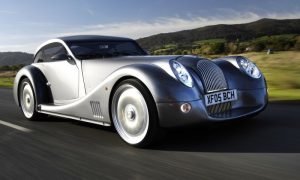How classics influence the cars of today and tomorrow

The car has been with us in one form or another for some time now, and after thousands of companies and consequently, millions of different models, it’s getting harder and harder to be original in the world of car design.
This leads to all sorts of questions about the nature of creativity and originality. Where will the next aesthetic trend come from? Technology? Material science? Fashion? They’re all possible sources of inspiration for car designers the world over.
And what of the past? Do classic cars have a direct influence on the cars of today and tomorrow? Many would argue that motoring’s current ‘white goods’ level of ubiquity suggests not.
Companies are constantly on a mission to be more financially efficient, so platform-sharing has become commonplace. the Golf, Audi A3 and Octavia were a solid case in point. This can sometimes hinder the design process, as not all the designer’s ideas and flourishes can be employed as the car needs to satisfy three manufacturers.
Then there’s the safety element. New cars have stricter-than-ever standards to meet, and again, this can influence the direction of a car’s aesthetic.
Back in the good old days, cars were designed from the heart first. They were the metal embodiment of all things exciting and radical. The only real concession a designer had to make was to ensure there was in fact enough room for the engine and some people. Other than that, it was pencil-based carte blanche – a giddy time in design indeed.
But what about now, in the age of technology and science? Can flair still be a part of a car’s image. Can those classic lines of the past find their way onto new, modern metal? We want to know the art behind it, and what the cars of the past can bring to cars of today and tomorrow. To do that, there was only one thing we could do: bring in two time-served car designers.
Firstly, we spoke to Stephen Harper. Currently at the helm of his own company, SHADO, Stephen has been designing cars all his life.
He dabbled with the Metro, he worked on the MG-F, there’s a mass of Volvo metal out there representing Stephen’s penmanship and he also designed a modern classic. Yes, this is the man behind the Escort RS Cosworth. We asked him; do cars of the past bring elements of design through to cars of the present?
“Sometimes they do… and at other times they don’t even come close. But in the case of the latter, it’s because some brands have no real history to pull from. However, a small detail of consistency can often define a brand that’s looking to identify itself. Like the shoulder-line on a Volvo. It’s been there ever since the 144.
“There’s the hockey-stick D-pillar at BMW, too. It’s a feature that still makes its way to every car released. It’s become classic through being constantly applied.”
So you can make your own lines classic and use them to identify the brand. It’s clever stuff, but only if it’s all yours, as Stephen explains: “Rarely do you steal features from outside your own box. You have to be fresh. It’s in homage, a hint at what someone could latch on to. Though in reality if it’s not as blatant as the new Beetle/500/MINI no one really notices. But, us designers still try and bring those lines through!”
So the classic lines and ideas are implemented subtly, unless of course it’s blatant re-birth of a car with modern underpinnings. Or of course, the classic lines are earned ‘in-house’ after decades of use. Though there are people with a different outlook, like Matthew Humphries.
He’s worked on many an automotive project, most notably as Morgan’s Head of Design for a number of years. And you can’t get more classic than that. What’s his take on bringing forward the styles of old?
“I think there are different elements that are considered with different vehicles. If I was to use a vintage car for influence (this could still be a 60s or 70s car) it’s all about the essence. What made the vehicle great? Was it the construction, the materials used? Was it the way the package dictated the design? It could even be the story.
“For example, if I was to re-design a Bentley ‘Blue Train’ it would be about the journey. How would the design expose the feeling of that journey?
“With other ‘iconic’ cars, key lines and characteristics can be used as a hook for the consumer to relate to the original, but just producing retro designs is not the key. The new 500 doesn’t remind you of the original just because of the shape of the lights. It has a certain charm that the original did. It’s a mix of materials/the way the light is let in the cabin etc.”
An important observation there. The essence and capturing it, is that the key to emulating the cars of the past? It certainly sounds like it. Though as Matthew goes on to explain, there’s another fundamental element to be considered, too.
“Proportion is always the key to capturing the instant recognisable feature. If a car is proportioned correctly from wheelbase to roof height, it works. That’s why, as designers, we still need to look back to classics and understand them before we can abstract them. It was exactly the same with Picasso. He learned and respected classic paintings before understanding how to abstract them.”
So yes, inspiration from the classics is still very much alive and well. But only when it’s done right, when it’s respected and when it’s brought into modern times with care, compassion and consideration.
It just goes to show that while the computers and accountants might make the fight for beauty and design harder, those people with the pens, pencils and inspiration can still push on through.
